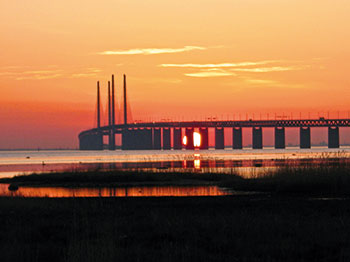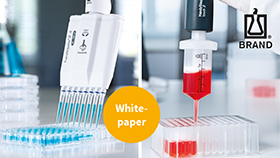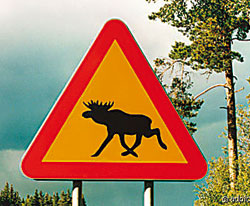Välkona i Sverige
Career strategies for young European scientists
by Ralf Schreck, Labtimes 02/2009
Many Swedish and non-Swedish postdocs still favour other countries in which to start their career, mainly due to the lack of funding opportunities and non-existent or congested career pathways for younger researchers. However, the situation is slowly improving.
Each autumn Sweden becomes the focal point of the scientific community and the general public when the Nobel laureates are announced. Without a doubt, the Nobel Prize creates a positive climate for science and research in Sweden. But how do the Swedes treat their scientists throughout the rest of the year? Are Swedish research institutions short-listed by foreign researchers looking for new challenges? Does Sweden have excellent funding programmes to promote young talent and to recruit pre-eminent foreign scientists? Or are you better off if you bring along your own fellowship or grant money? Is knowledge of the Swedish language necessary for survival inside and outside the lab? I hope to enlighten you with the following hints on how to pursue your career in Sweden.
According to the 2008 Academic Ranking of World Universities, the Karolinska Institutet in Stockholm is ranked 9th in the world in clinical medicine and pharmacy, and 16th in life and agricultural sciences. The same ranking confirmed that the universities in Uppsala, Stockholm and Lund belong to the 100 top universities worldwide. But Sweden boasts not only a couple of noteworthy universities; it is also among those countries in the world that devote most of their resources in relation to the gross domestic product (GDP) to research and development. In 2007, this expenditure amounted to almost €11 billion, which corresponds to 3.8 percent of GDP. The business sector accounts for approximately three-quarters of this investment. The main players are from the engineering, telecommunication, automotive and pharmaceutical sectors and include e.g. Ericsson, Volvo, Vattenfall, Scania, Electrolux, SKF, Astra Zeneca and ABB. In addition, Sweden is Europe’s fourth-largest biotech country.
When evaluating research output, Sweden very often ends up among the middle-ranking European countries. However, key research indicators, taking into account that Sweden with its 9.2 million residents is one of the smaller European countries, reveal that Swedish scientists are trying to make the most of each Swedish Krona (SEK) invested. For example, Sweden topped European comparative statistics in 2007 with respect to the number of scientific publications per capita and is ranked 2nd in the number of patent applications per capita and the relative share of personnel involved in research and development. According to ScienceWatch, Sweden is ranked 6th in the world when considering citations of publications between 1998 and 2008.
Due to the limited availability of national funds and networking possibilities, Swedish scientists are highly engaged in international collaborative projects. For example, in 2005 Sweden, together with Denmark, Finland, Iceland and Norway, founded NordForsk, a Nordic research board operating under the Nordic Council of Ministers for Education and Research. NordForsk not only gives policy advice but also offers funding and training opportunities in areas where Nordic countries already have a strong position. In addition, Sweden is intensifying its efforts to obtain a share of European money by participating in programmes funded by the European Commission or the European Science Foundation.
The Swedish System
Sweden’s research system is characterised by a high level of commitment, decentralisation and autonomy. The Swedish Ministry of Education and Research provides the framework for higher education and research, which is submitted to parliament as a government bill every four years. Government funds are allocated by direct appropriations to higher education institutes (faculty funds) and through support by research councils (council appropriations), about 30 sector agencies and by research foundations administering public funds.
Sweden’s oldest university was founded in Uppsala in 1477, followed by the University of Lund in 1666. All other universities were initially founded as university colleges and promoted later to universities by the Swedish Government. Individual institutions of the higher education sector enjoy great independence. For example, they are free to choose which programmes to offer, which research strategy to follow and what form of organisation to adopt. Sweden is becoming increasingly attractive for international students. In 2007, a quarter of new students and about one-third of recent PhD students came from abroad. Admission to a doctoral programme by the faculty board of a university should take place only in connection with employment as PhD student (Doktorandenanställning) or the approval of a study grant, fellowship or other external funding for the whole doctoral period. The Swedish Licentiate’s degree equals completion of half the coursework required for a doctorate/dissertation or two years of full-time study. Depending on the discipline it could be a degree on its own or a stage leading to a PhD.
The next career step seems to be a bottleneck for many young Swedish and also non-Swedish scientists. Although the number of students receiving doctoral degrees has significantly increased over the last two decades, the employment opportunities within the higher education sector did not grow to the same extent. If you want to do research at a university after obtaining your PhD, you may either apply for a postdoc fellowship or be employed as a postdoc. Fellowships are provided by the Swedish Research Council and by additional, rather limited sources, e.g. the Swedish Society of Medicine, the Bank of Sweden Tercentenary Fund and the Wenner-Gren Foundation. Often, these fellowships are limited to one or two years, since contracts of more than two years have to be open-ended in accordance with Swedish law. Postdoc appointments through grants for postdoctoral positions offered by the Swedish Research Council have also been available since 2005. Research assistant posts are intended for newly graduated postdocs pursuing a career in higher education as teachers or researchers. These posts are limited to four years; extensions are the exception. Other categories at Swedish universities are junior, associate senior and senior lecturers, and professors. With exception of the junior lecturer, all these positions require a doctoral degree. Internal performance-based promotions from junior or associate senior to senior lecturer and from senior lecturer to professor are possible. Universities are free to specify the allocation of hours for the individual teacher into teaching, research and administration.
The Swedish Research Council
The Swedish Research Council (Vetenskapsrådet) was established in 2001 as a government agency under the Ministry of Education and Research. One of its main responsibilities is the distribution of government funds for basic research, which annually totals about €250 million. The decision-making bodies are three Scientific Councils (Humanities and Social Sciences, Medicine, Natural and Engineering Sciences) and two Committees (Educational Sciences, Research Infrastructures). They allocate funds for research and research infrastructure in accordance with the Council’s general funding strategy.
The Swedish Research Council offers several grants to foreign and Swedish scientists. Besides the standard project grants, individual grants of likely interest to you are postdoc fellowships, postdoctoral positions, junior research positions or senior research positions. Postdoctoral fellowships are for research periods outside Sweden for between 6 and 24 months. If the applicant previously held a postdoctoral fellowship or postdoc position, then the funding period will be shortened accordingly. The amount of tax-free fellowship is based largely on the country-specific level determined by the European Molecular Biology Organization. In addition, there is a bench fee contribution of €2,800. In some areas of research, the fellowship is accompanied by a homecoming grant covering a period corresponding to half of the stay abroad. Last year’s success rates were 56% in spring and 41% in autumn. The 2009 deadlines are February 26 and August 27.
Grants for postdoctoral positions enable researchers with Swedish or non-Swedish doctorates to work at Swedish higher education institutions or research establishments. The salary is provided for 6 to 24 months. As mentioned above, if the applicant has already held a postdoctoral fellowship or postdoctoral post, then the funding period will be reduced accordingly. The host institution must be different from the institution where you obtained your doctoral degree. No more than three years are allowed to have elapsed between the date of your doctoral degree and the application’s deadline. Your project must differ from your previous work. In 2008, the success rates were 17% in the spring and 12% in the autumn selection. The next deadlines in 2009 are February 26 and August 27.
Grants for junior research positions are usually for four years and provide salary and project costs. Requests for equipment of up to €190,000 may be included in the application. Previous junior research positions reduce the duration of the grant. Priority is given to candidates who have completed their degree no more than five years before the last date for applications. Deadlines for these grants are usually in April each year.
With its senior research positions in Sweden, the Swedish Research Council seeks to recruit – within pre-defined research topics – scientists between a junior research position and permanent employment as a senior lecturer or professor. Scientists receiving their doctoral degree more than 10 years ago may not apply. Senior research positions are for six years and appointees primarily conduct research but also have to supervise doctoral students and teach postgraduate students. Research periods abroad are possible but, if extending beyond six months, they have to be approved by the Council. A standard salary is paid at the employing institution, research costs have to be secured by a research grant application. Applications are usually assessed by three to four non-Swedish reviewers. For the 2009 spring deadline on February 26, there were nine positions on offer in natural and engineering sciences. In 2008, there were also calls in medicine or clinical medicine with a deadline in April 2008. In the last four years senior research positions in Medicine have been oversubscribed ten- to twenty-fold. Between one and 80 applications were received for individual positions.
Swedish Foundation for Strategic Research
The Swedish Foundation for Strategic Research (SSF) was founded in 1994 and supports international competitive research in natural science, engineering and medicine. Its current capital is about €770 million and, in 2008, about €50 million were used for funding purposes. The major routes of funding with funding periods of three to six years are strategic research centres and framework grants, which provide money for collaborative research performed at one or several locations, respectively. Priority is given to research, which may lead to applications in the following areas: (1) bio-technology, drug discovery and development, medical technology and biomedical engineering; (2) systems, information and communication technology; (3) materials development; and (4) process and production technology. SSF also co-funds projects and initiatives by other foundations, agencies and funding organisations.
The ‘Future Research Leaders’ programme, supporting talented researchers in the process of establishing their own research group, and the Ingvar Carlsson Award, which helps homecoming postdocs to launch an independent career, will be of interest. Future Research Leader applicants may not be older than 40 years and must have earned a PhD degree within the last three to six years. Awardees receive €800,000 for a five-year period. The third round of the Future Research Leaders programme resulted in 20 awardees out of almost 200 applications. About one-third of the awardees were of non-Swedish origin in the first three rounds. According to Lars Rask from SSF, almost all awardees receive permanent positions before completing their project. A fourth call will be announced later this year.
The third round of the Ingvar Carlsson Award was announced in November 2008; the deadline was on 2 February 2009. Eight to twelve three-year grants ranging from €190,000 to €380,000 will be made available to homecoming postdocs. The awards are enhanced by an individual contribution of €4,700 and leadership training free of charge. You are expected to hold either tenure or a four-year assistant post or a lecturer post and to have a doctoral degree from a Swedish university. Up to one-third of the award may be used to cover your salary. The following criteria applied for the 2009 deadline: a doctorate, received during or after 2006, more than 12 months continuous postdoctoral work outside Sweden and the commitment to be permanently active in Sweden. Priority is given to applicants who do not return to their previous research group.
The Swedish Institute
The Swedish Institute (Svenska Institutet, SI) is a government agency whose responsibility it is to promote interest in Sweden abroad and organise exchanges with other countries in different areas, including research. Each year SI funds about 500 scholarships for students and researchers coming to Sweden. The Guest Scholarship Programme is also open to PhDs and postdocs with less than four years of postdoctoral experience. Scientists from changing priority countries, including many developing countries but also France, Germany, UK, Japan and the US, may also apply. Scholarships are highly competitive and fixed for 6, 12 or 18 months and amount to €1,100 for students and €1,400 for postdocs per month. There are no travel allowances for researchers from the more developed countries and neither bench fees nor family allowances are paid. Mandatory for your application is a letter of invitation signed by a professor or department head at the Swedish host university. The deadline for application in 2009 was February 1. The Visby Programme provides similar benefits but is restricted to the Baltic neighbours Belarus, Estonia, Latvia, Lithuania, Poland, Russia and the Ukraine. The next application deadline was March 1, 2009. Additional scholarships are available in the form of bilateral agreements and may be found at www.studyinsweden.se.
VINNOVA
VINNOVA, the Swedish Governmental Agency for Innovation Systems, was founded in 2001. One of VINNOVA’s major tasks is funding so-called ‘needs-driven’ or ‘applied’ research as well as stimulating national and international networking and cooperation between academic institutions and the business/industrial sector. Research funding in 2007 amounted to more than €100 million. There is a plethora of funding activities offered by VINNOVA; most of them are not open to application by the individual researcher. However, it is worth having a look at open calls in your area of interest from time to time. One activity that deserves a mention here is VINNMER. The aim of the VINNMER programme is to increase the number of highly qualified female scientists in academic and non-academic research institutions. It targets female scientists with first and completed postdoc experience but is not open to recent PhDs doing their first postdoc. Funds are provided for applied research in national or international co-operation between the university/college and the private/public sectors. The programme began in 2007 and will run until 2014 and its total budget of €47 million will fund about 100 successful applications. Depending on the type of co-operation, half of the applicant’s salary will be paid by the programme for one to three years. Additional costs and allowances are covered but grants will not exceed €280,000 over three years. The next application deadline is April 1, 2009.
STINT
The Swedish Foundation for International Cooperation in Research and Higher Education (STINT) was established in 1994. A small annual budget of about €7 million provides several grants and fellowships to improve the internationalisation of Swedish academia in all areas. Short-term stipends for up to three months may be used by Swedish university faculties to spend time at a foreign institution or by foreign scientists wishing to visit Swedish universities for teaching or research. PhD students may not apply nor are ongoing co-operations funded. Grants for Younger Researchers are aimed at scientists with less than seven years postdoctoral experience and should be used to set up a co-operation with one or two foreign partners. Grants are for up to three years and cover up to €35,000, which may not be used for salaries or purchasing equipment.
The Royal Swedish Academy of Sciences
There are several Royal Academies in Sweden promoting the arts, culture and science. The Royal Swedish Academy of Sciences (Kungliga Vetenskapsakademien) was founded in 1739 and takes care of natural sciences and mathematics. With minimal governmental support the Academy of Sciences plays a minor role as a funding body. It is primarily known for the award of international and national prizes including the Nobel Prizes in Chemistry and Physics, the Crafoord Prize and the Göran Gustafssonprisen, the largest national science award. In addition, the Academy maintains six smaller research institutes, including the botanical research institute Bergius Foundation in Stockholm, the subarctic Abisko research station and the world’s oldest mathematics research institute Mittag-Leffler in Djursholm.
Minor funding activities of the Academy are a postdoc programme together with the Japan Society for the Promotion of Sciences and the administration/selection of research fellows on behalf of various organisations. The number, the conditions and the endowment of these posts change from year to year and the awarded money goes directly to the institution where you are employed. Since 2000, funds provided by the Knut and Alice Wallenberg Foundation have enabled the Academy to make an annual selection of between eight and 12 scientists from the Academy’s disciplines. As a research fellow, you would receive half of your individual salary for five years with the possibility of working abroad for one to two years and a contribution to research expenses of about €5,000 per year. The fellow posts have been over-subscribed up to fifty-fold in the past. The final deadline for fellow posts made available through the Wallenberg Foundation was February 9, 2009.
The Wallenberg Foundation
Besides the well-known Nobel Foundation more than 2000 foundations support research in Sweden. The Knut and Alice Wallenberg Foundation is among the top 20 foundations in the world and was established by the Wallenberg family, the leading family in Sweden’s finance branch. This Foundation was launched in 1917; its aim is to “promote scientific research, teaching and/or education, beneficial to the Kingdom of Sweden”. In 2007, about 100 grants totalling €87 million were allocated, Swedish universities and academies being the major beneficiaries. One-third of its money is spent on high-value research equipment, whereas another 30% is used for major research projects and larger scientific networks, e.g. the Human Proteome Resource in Stockholm and Uppsala and the Neuroscience Research Center in Lund.
There is no general fellowship programme available through the Foundation but a smaller number of fellowships are offered in changing priority areas. For example, in 2008 ten postdoctoral fellowships were offered in micro- and nanosciences for the last time. As already mentioned above, the research fellow posts administered by the Royal Swedish Academy of Sciences will be terminated after 2009. No individual awards are made to cover travel, printing or conference costs. No information on future fellowships for postdocs has been yet disclosed by the Foundation.
Swedish Cancer Society
The largest supporter of cancer research in Sweden is the Swedish Cancer Society (Cancerfonden). As a non-profit organisation, Cancerfonden receives no major financial support from the government but depends on private donations and charitable events. Last year more than €33 million were distributed to support more than 400 research projects and about 50 research positions. Approximately two-thirds of the funds are used for basic cancer research projects. Cancerfonden’s funding includes research projects, positions for postdocs and senior scientists, attendance at conferences and short research stays. Research projects are, in general, funded for three years and provide up to €190,000 for consumables, staff and small equipment. As a younger scientist you are encouraged to apply but are expected to display a certain degree of autonomy in your application. Postdoctoral positions, as well as positions funded by the Young or Senior Investigator Award, are aimed at luring not only young talent but also experienced scientists from other scientific areas into cancer research. There is one application deadline per year. Committees of the Cancer Society evaluate all applications and forward suggestions to the Research Board, which makes the final decisions. Further questions about the above-mentioned funding opportunities have not yet been answered nor does Cancerfonden publish an annual report in English.
Additional Swedish foundations offering funding in the biomedical sector totalling between €5 and €12 million per year include the Swedish Children’s Cancer Foundation, the Swedish Heart-Lung Foundation and the Swedish Foundation for Health Care Sciences and Allergy Research (Vårdal Foundation).
Outlook
Sweden is a preferred country for international undergraduate and postgraduate students. The reason for this is definitely not only the lack of tuition fees but also the existence of eminent universities. Many Swedish and non-Swedish postdocs still favour other countries to start their career, mainly due to the lack of funding opportunities and non-existent or congested career pathways for younger researchers. However, the situation is slowly improving. Individual institutions, such as the Karolinska Institutet, are trying to establish novel career pathways for researchers and scientists. In the 2009 governmental bill, the necessity to establish career structures and career opportunities for young scientists was mentioned, without presenting immediate solutions. The 2009 bill also announced the largest ever investment in Sweden’s research: in addition to existing funds €1.4 billion will be made available between 2009 and 2012 for research and innovation. Hopefully, part of this money will be used to improve the situation for young scientists in Sweden.
Internet Resources
Last Changed: 09.06.2012










